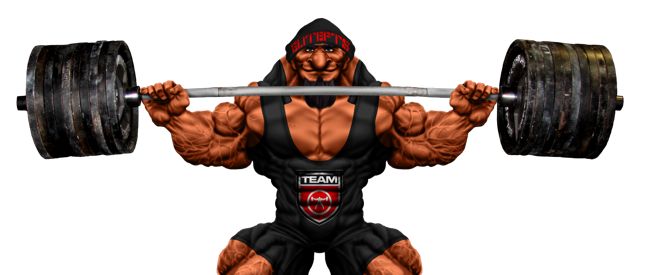
As much as I’d like to throw out a couple paragraphs of mildly witty banter to get this article started, I’m too hung over and sleep deprived, so here it goes.
Why the hell does everyone who uses the Olympic lifts to build speed and explosiveness feel they need their athletes to work at 90 percent and up of their 1RM? Part of the reason this particular group of lifts has been dropping out of favor in the strength and conditioning community is because of the increased risk of injury to the athlete. This is largely due to the fact that the athletes aren’t being taught how to correctly perform the lift. We put too much emphasis on bar weight instead of bar speed.
I’m not saying that you have to spend months perfecting every athlete’s clean/snatch form, but they do need to be competent and comfortable in the lift. Some people will naturally pick up on these lifts and will only require a minimal amount of fine tuning. These are going to be the people who actually have semi-properly functioning glutes and hamstrings, which, sadly, aren’t that common among today’s athletes. For the rest who are all quads and lower back when it comes to lifting, it’s going to take some extra attention to detail. Ideally, you’d spend some time box squatting and sled dragging (or something similar), so that they get the feel for and learn how to actually drive through their hips. That allows them to actually get into triple extension during the lift, which is where all athletes’ explosive capacity comes from. Performing the Olympic lifts sans triple extension doesn’t really do jack to improve performance.
Here are a couple examples of guys with huge clean numbers and zero triple extension:
Yes, they are moving big weights, but there is very little athletic development happening there. Plus, anything over about five reps on the Olympic lifts is just conditioning work, even at higher weights like they were using in the videos.
If you troll through PubMed or any other open access journal search engine and look at the studies where they measure peak power output during the Olympic lifts, you’ll find that the highest power output is at around 80 percent of 1RM. However, there isn’t usually much of a difference in the power outputs from 50–90 percent of 1RM. Eighty percent just happens to be where it peaks. So instead of loading up to 90 percent and going to town, why not drop back to the 60–80 percent range and work from there? You don’t use a belt sander to scratch your ass, so why load the bar with more weight than necessary to illicit the desired training response?
Jim Wendler’s 5/3/1 program is built on the very same principle. You can’t make the 80 percent bigger without making the 100 percent bigger. This doesn’t have to be some incredibly complicated and intricate program either. Start with a weight your athletes can do for a solid 2–3 reps (and by solid, I mean good form and fast bar speed). Then add 5–10 pounds in each training session until bar speed or form break down. At that point, drop the weight back, reestablish a new “starting weight” like you did before, and work back up. Sound familiar?
When programming for the Olympic lifts, you have to decide if you’re training the lift or using the lift to build a particular component. I don’t really give a damn what my football or basketball players’ max power clean is. All I care about is if that lift is making them more explosive athletes. If not, I need to tweak my programming or find a different set of lifts to build that particular aspect of their performance. Everyone loves a big 1RM in any lift, but it isn’t the “end all be all” when building athletic performance.








